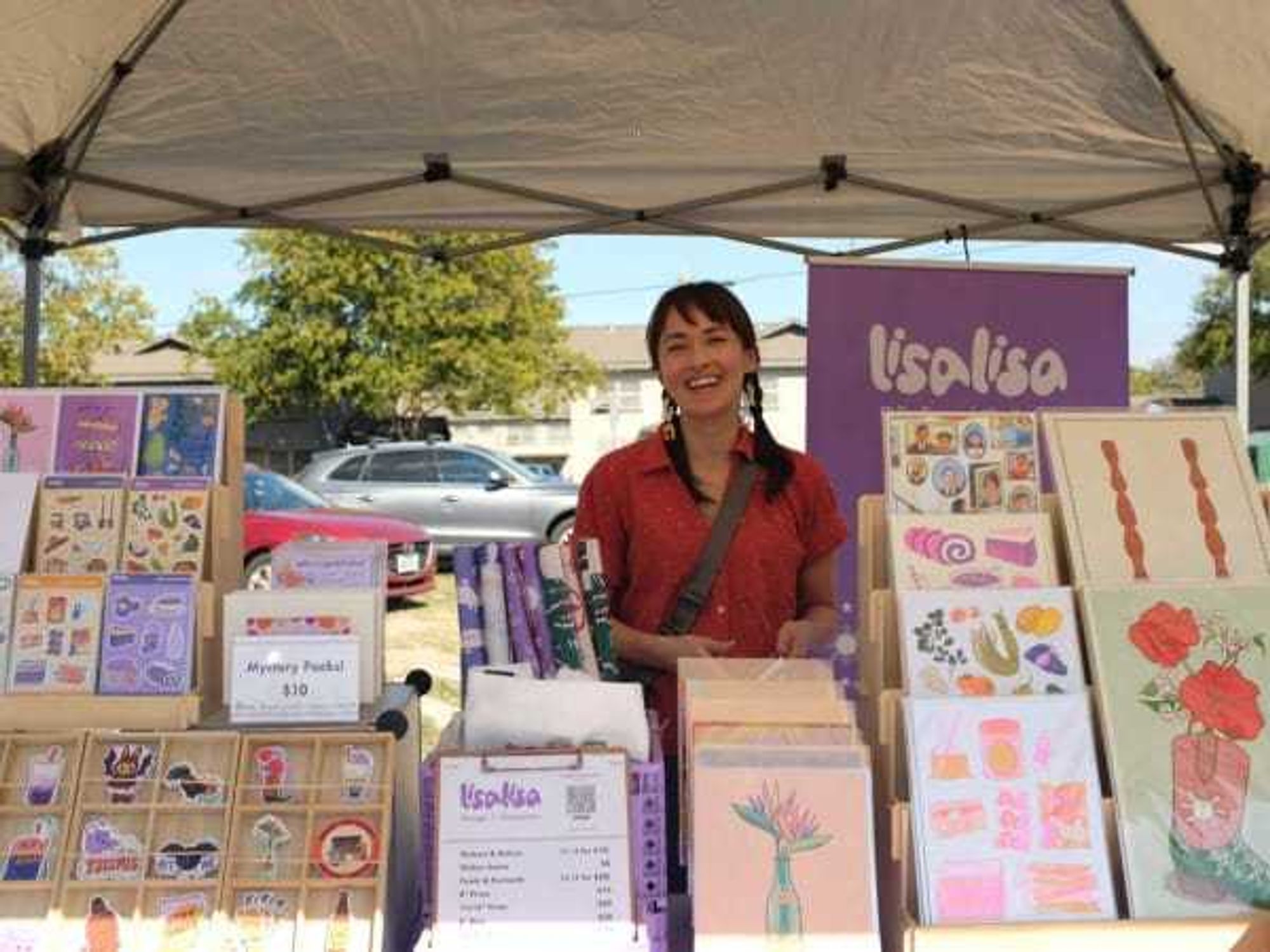Brave New Theater
Phineas and Messenger offer lessons on the benefits (and challenges) ofcollaborative production
- Paper Moon Repertory's The 21 Would-Be Lives of Phineas Hamm
 Cambiare Productions' Messenger No. 4 (or. . . How to Survive a Greek Tragedy),
Cambiare Productions' Messenger No. 4 (or. . . How to Survive a Greek Tragedy),
The Blue Theater is one of those magical places reserved for the initiated. Tucked back among warehouses on Springdale Road, the surprisingly expansive black-box theater has no bright sign on the street, no lights in its parking lot — just a blue neon light above the warehouse doors that simply says ‘theater.'
At the end of the long parking lot, hidden behind a row of parked cars, a warm and cheery light spills from a garage door, opening like an enchanted grove. Tumbling out into the night is an impromptu theater lobby filled with patrons who are enjoying cocktails and treats as they await the evening’s double feature of theatre.
This month, the Blue Theater hosts an experiment in collaboration and performance, the back to back presentations of two new full-length works by two of Austin’s progressive new theater companies: Paper Moon Repertory and Cambiare Productions.
Since we have tickets to both shows, my friend and I are given poker chips, which must be handed to the well-humored bartender in exchange for one of the evening’s featured cocktails sponsored by Deep Eddy Vodka. When the curtain is finally pulled aside and the patrons ushered into the theater, a magical world opens up before us.
The first piece in the double feature is The 21 Would-Be Lives of Phineas Hamm, written and directed by Rachel McGinnis for her company Paper Moon Repertory. The set, designed by the ubiquitous Ia Enstera, stretches across the back of the intimate space so that the audience is fully embraced by the world of Phineas.
A weathered wall of portals, frames, gears and cranks, wooden inventions, and glowing electric lanterns is populated by a scattering of dolls, like sleeping beauties, pale skinned and dark haired marionettes giving breath to the world before the play begins.
The ragged porcelain dolls serve as a chorus who guide us and Phineas through a supernatural tale. Phineas’ father is an inventor who neglects his wife and young son in an obsessive pursuit of his curious invention, which ultimately claims his life. When he comes of age, Phineas’s mother gives him the mysterious contraption, and so Phineas begins his own escape.
Words cannot fully express the effect of this production. The work of a clear vision, this play is saturated with luscious detail. The tight ensemble cast maintains an engaging and heightened theatricality throughout the journey, working like a well-oiled machine, each cog and gear perfectly in place.
I was filled with joy and thankful that Paper Moon Repertory has so fully embraced the unique visceral power of theater and unleashed it with such a strong manifestation in this work. I hope this will not be the last time that Phineas comes to life; but even so, I cannot wait to see what McGinnis comes up with next.
After such a rich theatrical meal, we are ushered out of the theater so that the cast and crew can transform the space for the next production. There is a flurry of activity within as audience and actors transition to the world that is to come. While they work, we drink and discuss the play we've seen and the one yet to come. (Afterward, I searched the lobby in vain for a cup of coffee. Alas, it's time to return to the theater.)
The second half of the evening is another full length original work. Cambiare Productions' Messenger No. 4 (or. . . How to Survive a Greek Tragedy), written and directed by Will Hollis Snider.
As we take our seats for the second show, I am intrigued by the set’s transformation. Gears and lanterns have been removed, and now only a skeleton of Phineas’ world remains. And as the play begins, we see how the costuming and performance style of Messenger No. 4 is slick and modern, more retro television sc-fi than dreamy steam-punk.
Messenger No. 4 is what I would call an "insider comedy." References to millennia of popular entertainment, from Aristophanes' The Frogs to The Matrix, abound as the play’s hero, Messenger No. 4, travels through the fabric of human drama to deliver the messages that keep these plays moving along. The ensemble, a chorus of famous characters from Gertrude to Electra, fully embraces the style of the performance.
It is an interesting premise and is played in broad minimalist strokes like a fifties spy sitcom. The Messenger is a nameless suited bureaucrat in the industrial machine of the entertainment industry. (I mean, this in the most universally grand sense: the bureaucracy of creation.) He wants a different life. He wants to live like the legendary Rogue Messenger, and be the center of the story for once.
Unfortunately, the space presents its own complications: transitions take too long, and the style sometimes looks unintentionally comical against the detail of the set behind them. In the end, at least for me, the second production suffered for its proximity to the other work, unable to fully transform a space still saturated with the other world.
There are clearly challenges and benefits in producing new works in this cooperative manner. I see the advantages of it: the shared expenses, a captured audience primed to take a chance on new work. The birth of two new works into the world is of great value. If more people saw these works because of the collaboration, that is a great benefit.
The challenges, however, are significant enough to be examined for future collaboration. Two full-length and complexly detailed plays such as these is a lot for one evening. I did not have the opportunity to fully digest the first play before I headed in for my second great heaping. Perhaps thinking of it as a meal with several courses might even affect the appreciation of multiple theatre offerings in a night.
I hope the Austin community will continue to explore this partnership model, just as I hope that Paper Moon and Cambiare will share the wisdom they have gained in this experience. This collaborative effort offers a great opportunity for creative growth and exploration in a community that needs to be creative about resources.
Multi-company repertory theater or artistic community collectivism, call it what you will; but if this model continues to build a space where there is audience, energy and freedom to create new work, Austin should be all in.


 Asian vendors gathered for Tayo Na launch part, which celebrated the area's
Asian vendors gathered for Tayo Na launch part, which celebrated the area's  Asian Season ATX celebrates Asian Heritage Month at Austin Beerworks.Photo by Joi Conti Photography
Asian Season ATX celebrates Asian Heritage Month at Austin Beerworks.Photo by Joi Conti Photography